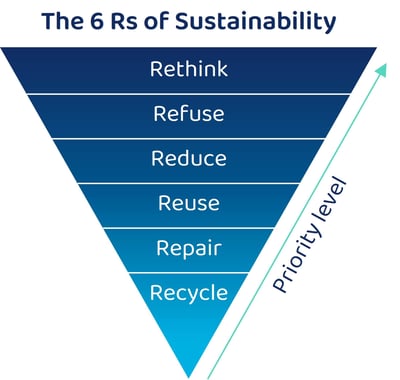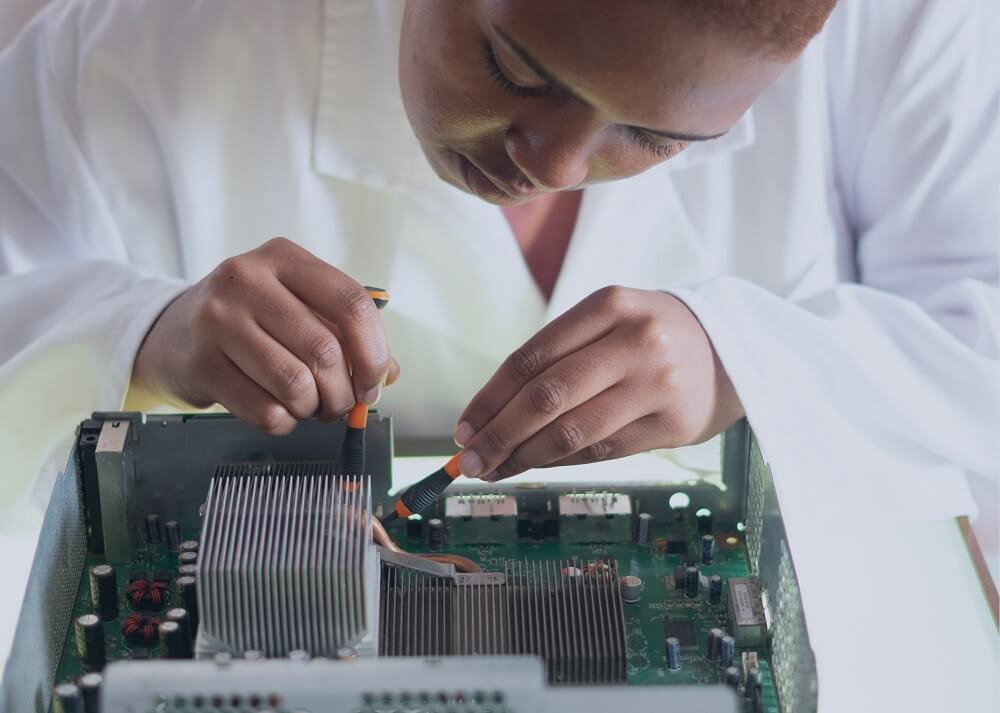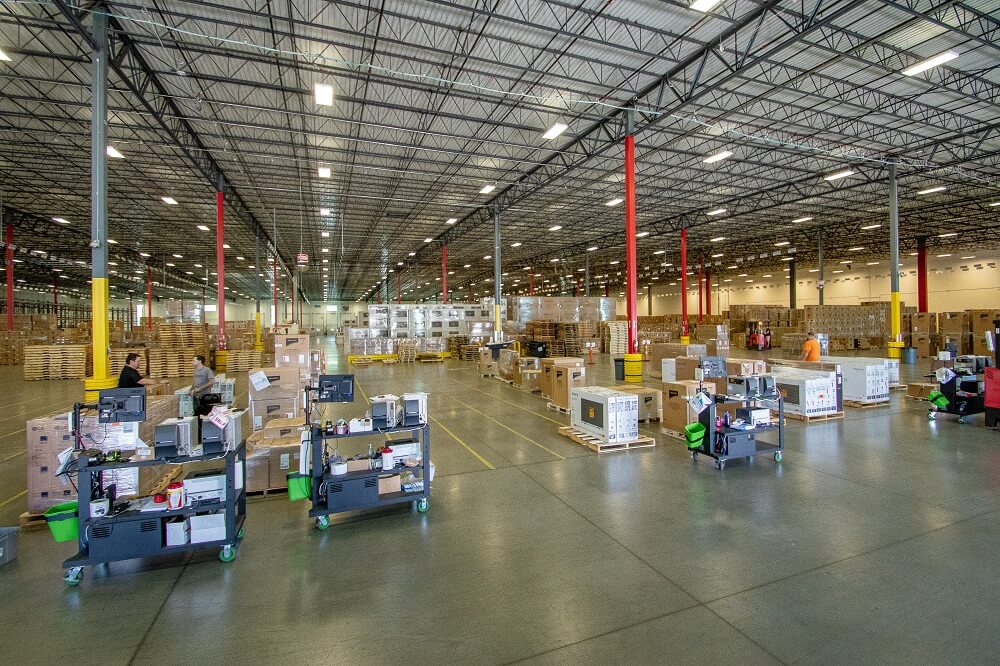As the conversation around sustainability in technology deepens, raw materials, manufacturing processes, global supply chains and next-use thinking are becoming first thoughts rather than afterthoughts. From textiles to technology, companies around the world are striving to balance environmental stewardship and social responsibility with profitable growth.
Technology is so ubiquitous, however, that delivering meaningful sustainability can seem daunting, despite the global imperative to do so. The worldwide clamor for more speed, power, convenience and opportunities — and more revenue — doesn’t help matters. Breaking it down into the 6 Rs of sustainability provides an actionable framework that propels the conversation about ethical practices and environmentally friendly technology from what’s possible to what’s doable to what’s next.
What Are the 6 Rs of Sustainability?
 Taking purposeful action enables companies to strengthen their environmental, social and governance (ESG) efforts in ways that put a healthy planet and a healthy bottom line on equal footing. In harmony with a circular economy, the 6 Rs of sustainability can be thought of as a priority funnel that enables you to think systematically about IT challenges and create meaningful change that’s good for business, society and the planet.
Taking purposeful action enables companies to strengthen their environmental, social and governance (ESG) efforts in ways that put a healthy planet and a healthy bottom line on equal footing. In harmony with a circular economy, the 6 Rs of sustainability can be thought of as a priority funnel that enables you to think systematically about IT challenges and create meaningful change that’s good for business, society and the planet.-
Rethink
Consider the environmental impact of every design, manufacturing and distribution choice -
Refuse
Reject the use of harmful materials — or your partners and customers may do it for you -
Reduce
Target excess everywhere, from e-waste to energy consumption to your carbon footprint -
Reuse
Design products that make it easier for others to reuse the materials that go into or around them -
Repair
Extend the life and value of a product for a fraction of the environmental cost -
Recycle
Give customers easy options to trade in, trade up or recycle their technology
Here’s how technology companies can implement the 6 Rs of sustainability to participate fully in the circular economy, extend the lifetime value of their products and help tackle the e-waste crisis.
1. Rethink
Rethinking sustainability in technology should be your first priority, if for no other reason than it is a target-rich environment. From product design and materials sourcing to distribution and end-of-life considerations, there is ample opportunity to make incremental improvements in sustainability throughout the technology lifecycle. Explore questions such as:- Can the product be designed for easier disassembly, repair and recycling?
- Can hazardous waste be reduced to a minimum or avoided entirely?
- Can environmentally friendly technology components be used instead?
- How do supply chain logistics impact our carbon footprint?
2. Refuse
Refusing to use harmful, hazardous, non-sustainable or socially irresponsible materials when alternatives exist isn’t just the right thing to do, it’s often the most expedient, too. Increasingly, people want to do business with those who care about sustainability in technology. Making environmentally friendly technology choices by refusing the less safe, harmful options serves as a beacon to like-minded customers, partners, employees and other stakeholders. Conversely, not prioritizing sustainable options risks reputational damage that can severely impact sales, relationships and the ability to attract talent — you don’t want to be on the receiving end of “refuse.”
3. Reduce
The byproduct of technology production is often e-waste, but making environmentally friendly choices can lessen its impact on the planet. A thoughtful, deliberate approach to product design and distribution can reduce:- The amount of material used in manufacturing and packaging
- How much e-waste ends up in landfills
- Reliance on harmful chemicals or finite resources
- Energy consumption and overall carbon footprint
- Greenhouse gas emissions associated with supply chain logistics
4. Reuse
Technology production can be extraordinarily damaging to the environment. But technology can also improve the ability to reuse the resources consumed by manufacturing, from reclaimed water to chemical derivatives to the packaging removed from incoming materials. Products should be designed with reuse in mind, whether that reuse is happening during production or on the consumer end. Even the machinery used during manufacturing can be designed for reuse as-is or with minor adjustments to accommodate innovation.
5. Repair
A closed-loop supply chain that proactively addresses what happens when devices and equipment are no longer functioning as intended can extend the product lifecycle and reduce e-waste significantly. Environmentally and fiscally conscious customers appreciate the opportunity to repair a familiar, trusted product rather than replace it with a brand new one. Offering global depot repair services — whether in-house or outsourced to an experienced partner — impacts a product’s longevity and adds to customer value and satisfaction. As a vital component of the circular economy model, repairing a device enables you to profitably recover and reuse products and parts instead of adding them to the growing problem of e-waste.
6. Recycle
When a product can no longer be repaired or refurbished, it’s time to responsibly and securely harvest reusable components and recycle all that’s feasible. Companies can design-in recyclability through the choices made in materials and ease of disassembly. Additionally, offering convenient buy-back, trade-in and trade-up programs and IT asset disposition services give end customers more options to close the gap on technology waste.
Responsible IT asset disposition maximizes technology value and helps ensure that assets are disposed of properly, including de-manufacturing and parts harvesting processes. IT asset disposition services should be performed using sustainable and environmentally responsible practices both internally and externally, including compliance with all applicable local, state, federal and in-country laws to ensure customers’ data is protected throughout every step of the process.
Sustainability is the Key Driver of Innovation and Prosperity
Sustainability in technology is a journey of incremental improvements that build upon one another through collaboration, concerted effort and a commitment to doing what’s right for the environment and all that depend on it for survival. In the whitepaper, “Your Guide to Actionable Sustainability in IT,” delve into more practices you can put in place today for a better tomorrow.
About the Author
 Bobby Wallace serves as the Vice President of Global Repair Services for Shyft Global Services. He focuses on customer growth and service delivery and oversees the company’s CenterPoint facility in Groveport, Ohio, which encompasses Shyft’s widest range of end-to-end product lifecycle services.
Bobby Wallace serves as the Vice President of Global Repair Services for Shyft Global Services. He focuses on customer growth and service delivery and oversees the company’s CenterPoint facility in Groveport, Ohio, which encompasses Shyft’s widest range of end-to-end product lifecycle services.





